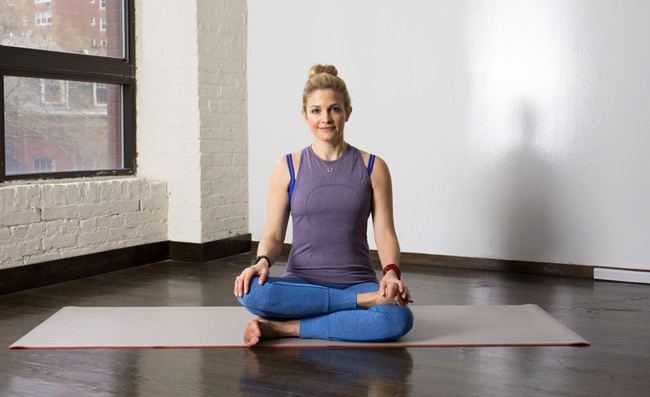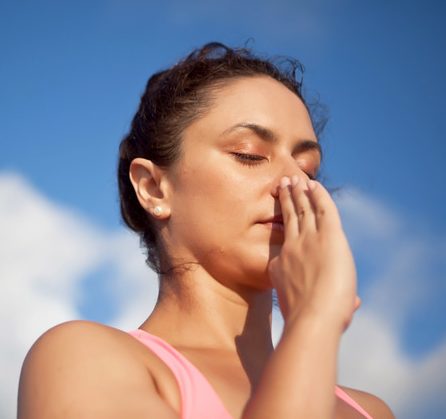
Yoga practice involves the utilization of physical and mental activities that are used to train the mind and the body effectively. Surgery involves the infliction of a physical wound in order to access some internal organs of the body which need to be treated either to remove some abnormal cells or to repair some damage. There is also skin surface based surgery, but these surgeries tend to be short and quick, thus not affecting the individual too much.
Surgery involves the cutting of skin and flesh to repair some form of damage within the body or to remove harmful cells such as tumor cells from the body. Surgery may be extremely basic or may be extremely complicated depending on the type of condition and on the extent of the problem being sorted out.
Surgery & Yoga Options
The use of yoga poses after surgery depends entirely on the type of surgery that has been performed.
- If surgery is performed on one of the lower limbs, then it is possible to do nearly all the seated yoga poses as these are used to work on the upper body of the individual.
- Surgery on the chest or abdomen would mean that there is little yoga that one can do for a period of weeks until the surgical wound has healed. One should consult with a doctor to figure out what parts of the body can be exercised. The person may be restricted to basic poses and breathing exercises during the recovery period from surgery.
Avoid extreme poses as these could damage the surgical wound, thus lengthening the recovery period. Any movement of the body will lead to a movement of these parts, thus potentially damaging the surgical wound as it heals. It usually takes a few weeks for a surgical wound to heal to full strength. After this, there should be no issue with performing exercises. One may avoid stretching the affected area for a few additional weeks to ensure that no damage occurs. However you would essentially require the permission of your doctor.
Discover the joys of pranayama (breathing exercises), including ujjayi, viloma, and nodhi sodhana.
Pranayam in Action
Sit in asana. Breathe inside slowly, very slowly, allowing the smooth passage of prana to each molecule, fiber and cell of the body. Expand diaphragm, so more air will come in lungs. Hold for 4/5 seconds. Exhale slowly by contracting diaphragm giving the air cells sufficient time to re-absorb the residual prana to the maximum possible extent. Again hold breath out for 4/5 seconds. Repeat 3-4 times.
During Pranayama one should be totally in fineness of inhalation, exhalation and in the naturalness of retention. Each inhalation activates the Central Nervous System into stimulating the peripheral nerves and each exhalation triggers the reverse process. During retention of breath, both processes take place. While inhaling or retaining the breath in pranayama cycle, remember to ensure that the abdomen does not swell.
Ujjayi or The “loud breathing”
This consists of drawing air in through both nostrils with the glottis held partially closed. This partial closure of the glottis produces a sound like that heard in sobbing, except that it is continuous and unbroken. Ujjayi breathing has many variations. For example, we can breathe in through the throat, then completely close one nostril and breathe out through the other nostril, which is only partly closed. This technique is called an anuloma ujjayi. In a pranayama technique called viloma ujjayi, we breathe in through the nostril and breathe out through the throat. This technique is used to lengthen the inhalation. In ujjayi pranayama it is important to follow this rule: when we regulate the breath through the nostril, we never breathe through the throat at the same time.
Nadi Shodhana (Alternate Nostril Breathing)
- Sit comfortably with your spine erect and shoulders relaxed. Keep a gentle smile on your face.
- Place your left hand on the left knee, palms open to the sky or in Chin Mudra (thumb and index finger gently touching at the tips).
- Place the tip of the index finger and middle finger of the right hand in between the eyebrows, the ring finger and little finger on the left nostril, and the thumb on the right nostril. We will use the ring finger and little finger to open or close the left nostril and thumb for the right nostril.
- Press your thumb down on the right nostril and breathe out gently through the left nostril.
Now breathe in from the left nostril and then press the left nostril gently with the ring finger and little finger. Removing the right thumb from the right nostril, breathe out from the right. - Breathe in from the right nostril and exhale from the left. You have now completed one round of Nadi Shodhan pranayama. Continue inhaling and exhaling from alternate nostrils.
- Complete 9 such rounds by alternately breathing through both the nostrils. After every exhalation, remember to breathe in from the same nostril from which you exhaled. Keep your eyes closed throughout and continue taking long, deep, smooth breaths without any force or effort.
- Nadi Shodhan pranayama helps relax the mind and prepares it to enter a meditative state. Balances the left and right sides of the brain and calms the nervous system, which could play a part in seizure control.
Contraindications/
- Avoid any movements that tear internal or external stitches
- Follow your doctor’s orders.
- Observe and adjust activities to energy levels.
- Take time for yourself and receive support.

